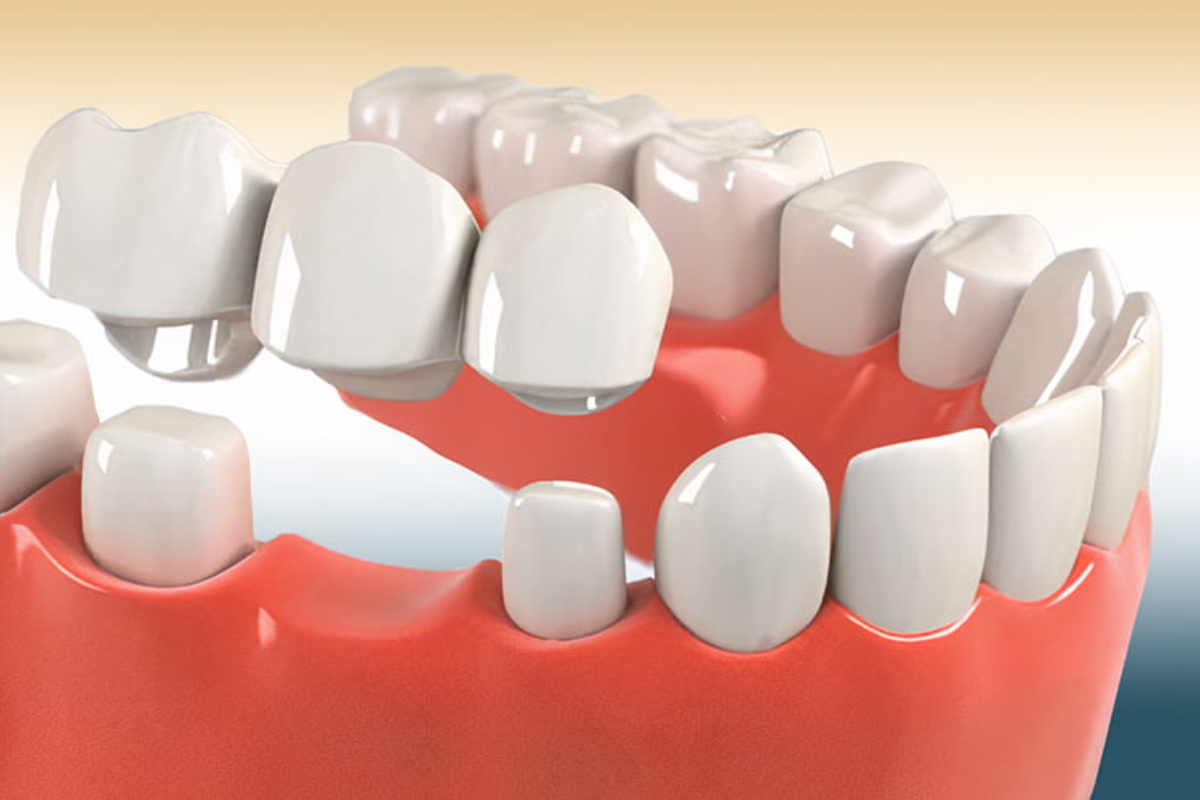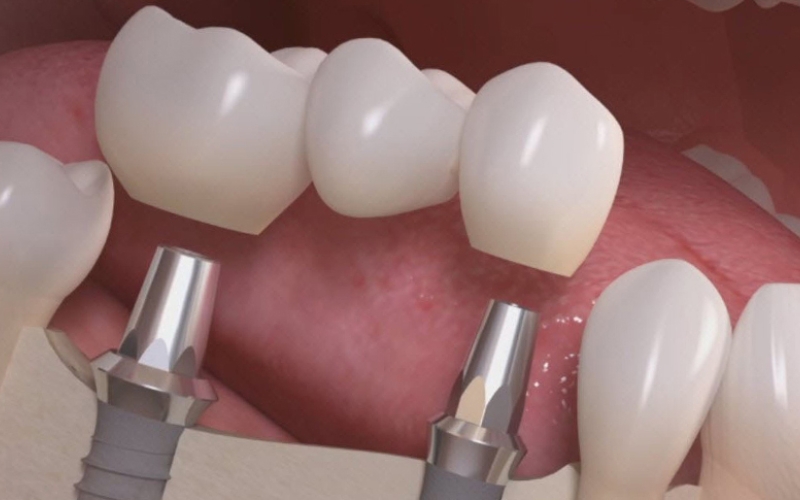1101-116 Grande Blvd, Cochrane, Alberta, T4C 2G4
Why Dental Bridges Are a Reliable Solution for Missing Teeth

When teeth are missing, it affects not only your appearance but also your ability to chew and speak clearly. For those looking to restore their smiles, dental bridges offer a dependable and time-tested solution. They are designed to close the gap left by missing teeth, improving both the aesthetics and functionality of your smile. While there are other options available, such as dentures and implants, dental bridges remain a popular choice for many patients. But why exactly are dental bridges so reliable? Let’s explore what makes them a trusted option for replacing missing teeth.
How Dental Bridges Work
Dental bridges, as their name suggests, “bridge” the gap between two healthy teeth. A bridge consists of two or more crowns on either side of the missing tooth, known as abutment teeth, with a false tooth in between, called a pontic. The pontic is designed to look and function like a natural tooth, restoring both appearance and the ability to chew effectively. Dental bridges are typically made from materials like porcelain, ceramic, or a combination of both, ensuring they blend seamlessly with the rest of your teeth.
In many cases, a dental bridge can be supported by natural teeth, or in other instances, it can be anchored to dental implants for added stability. Your dentist will work with you to determine the best option based on your dental health and preferences.
Restoring Functionality with Dental Bridges
Missing teeth can make it difficult to perform essential tasks like chewing and speaking. A dental bridge not only fills the gap but also restores the functionality of your bite. By distributing the force evenly across your teeth, a bridge can help prevent further complications that arise from missing teeth, such as shifting or misaligned teeth. The bridge stabilizes your bite and ensures that surrounding teeth remain in their proper position.
Patients who receive dental bridges often report immediate improvements in their ability to chew and speak clearly. The bridge provides a secure solution, mimicking the natural feel of teeth, so you can enjoy a more functional and comfortable daily routine.
Aesthetic Appeal and Self-Confidence
One of the main reasons patients opt for dental bridges is the aesthetic improvement it offers. When a tooth is missing, the gap can affect your confidence and make you feel self-conscious about your smile. Dental bridges are custom-made to match the color, size, and shape of your surrounding teeth, creating a natural-looking result that blends seamlessly with the rest of your smile.
Because of the precise craftsmanship that goes into creating dental bridges, they are often indistinguishable from natural teeth. Many patients find that restoring their smile with a bridge boosts their self-esteem, giving them the confidence to smile and speak freely without worrying about their appearance.
Long-Lasting Durability
Dental bridges are known for their durability, often lasting 10 to 15 years with proper care. Unlike some dental solutions that require frequent adjustments or replacements, bridges provide a stable and long-term option for those seeking a solution for missing teeth. Regular dental check-ups and proper oral hygiene can ensure that your bridge stays in excellent condition for years to come.
Routine cleaning, including brushing, flossing, and using an antibacterial mouthwash, helps to prevent decay around the abutment teeth. Many patients find that their dental bridges offer a low-maintenance, reliable solution that stands the test of time.
Types of Dental Bridges
There are several types of dental bridges to choose from, each catering to different dental needs:
- Traditional Dental Bridge – This is the most common type, consisting of a false tooth held in place by crowns attached to the abutment teeth. It works well when you have natural teeth on both sides of the gap.
- Cantilever Dental Bridge – A cantilever bridge is used when only one abutment tooth is available on one side of the gap. While less common, it can be effective in certain cases where other options are limited.
- Maryland Bonded Bridge – Also known as a resin-bonded bridge, this option uses a metal or porcelain framework bonded to the back of the abutment teeth. It is a more conservative option as it doesn’t require the same amount of enamel removal as traditional bridges.
- Implant-Supported Bridge – Instead of being supported by natural teeth, this type of bridge is anchored to dental implants. This provides extra stability and is often a preferred option for patients with multiple missing teeth.
Your dentist will evaluate your individual case to determine which type of bridge is best for your needs.
A Cost-Effective Solution
While dental implants are a great option for replacing missing teeth, they can be more invasive and expensive. Dental bridges provide a more accessible and less invasive option while still offering reliable results. For many patients, the cost of a dental bridge is significantly lower compared to implants, making it a preferred solution.
Though cost shouldn’t be the only factor in choosing a dental restoration, it plays a role in many patients’ decisions. Dental bridges deliver exceptional results without the need for complex surgical procedures, making them a practical choice for those looking to restore their smile.
Protecting Oral Health
Missing teeth can lead to a number of complications if left untreated. Over time, the gap created by a missing tooth can cause surrounding teeth to shift, leading to misalignment and bite problems. This can also make it more difficult to maintain proper oral hygiene, increasing the risk of decay and gum disease.
By filling the gap with a dental bridge, you can help prevent these issues from arising. A well-fitted bridge supports the natural alignment of your teeth, reducing the risk of future dental problems and making it easier to care for your teeth. In many ways, a dental bridge not only restores the look and function of your smile but also protects your overall oral health.
The Procedure: What to Expect
Getting a dental bridge typically requires two to three visits to the dentist. During the first visit, your dentist will prepare the abutment teeth by removing a portion of the enamel to make room for the crowns. Impressions are then taken to create a model for the bridge, ensuring a perfect fit. In the meantime, a temporary bridge may be placed to protect the exposed teeth and gums.
Once your permanent bridge is ready, it will be placed and adjusted for comfort and function. After it’s secured in place, you’ll be able to enjoy the full benefits of a restored smile. Follow-up appointments may be needed to ensure everything is working correctly.
Maintaining Your Dental Bridge
Caring for your dental bridge is essential to ensure its longevity. By maintaining a strong oral hygiene routine, you can prevent issues such as decay around the abutment teeth. Make sure to brush twice daily, floss around the bridge, and visit your dentist regularly for check-ups.
Your dentist may also recommend using a special floss threader to clean underneath the bridge, as regular floss may not be able to reach these areas. With proper care, your dental bridge can last for years without the need for repair or replacement.
Dental bridges are a reliable and effective solution for replacing missing teeth. With the ability to restore both functionality and appearance, they provide a practical and long-lasting option for those looking to improve their smile. Whether you need to replace one tooth or multiple teeth, a dental bridge offers stability, durability, and aesthetic appeal. Speak to your Dentist Cochrane to find out if a dental bridge is the right solution for you.
If you’re considering a dental bridge in Cochrane, it’s important to consult with your dentist to determine the best course of action for restoring your smile.


